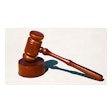How do you choose which insurance policy to purchase? Insurance professionals discuss the types of policies available, and how they decide, after evaluation on their part, whether to insure your facility and, if so, whether to pay if a claim is made.
IT GOES WITHOUT saying that every fitness center will have its share of incidents, from members slipping on a wet floor to falling off of a cardio machine to dropping weights. And, although the risk of liability is high in a fitness environment, thankfully, only 30 to 40 percent of fitness centers will ever file a claim. The explanation, according to Steve Shelton, president of Sports and Fitness Insurance (www.sportsfitness.com), Madison, Miss., lies in the facility's response to its members in every situation - not just those that could result in a lawsuit. When consumers thoughtfully choose a fitness facility, they pick one that has a safe, well-managed, proactive environment (including shoveled sidewalks, mats in wet areas, well-maintained equipment), and responsive staff (trained in first aid, CPR and AED use). Also important is a camaraderie between the staff and members. All of this goes a long way toward preventing a claim in the event of an incident. People don't want to sue those to whom they feel close and who treat them well - both during an incident and in the months and years they've been a member without incident. So, your staff members' responses to anything from a prospective member's facility tour, to questions about equipment usage, to preventing or responding to an incident, can all help to prevent future litigation. However, when claims do happen, they generally fall into two categories: premise liability, such as slipping and falling on an icy sidewalk, and health club specific liability, such as slipping and falling on a wet pool deck. Premise liability accounts for anywhere from 50 to 60 percent of claims. Remember, for someone to successfully file a claim against your fitness center, there has to be negligence on your part. Club managers can take big strides toward mitigating those risks with thoughtful planning and execution of prevention strategies (see Risk Reduction Checklist).
To pay or not to payWhen a claim is filed, insurance companies have to decide whether to pay, pursue mediation or fight the charges. Some companies and, for that matter, facility owners, may choose to pay the claim right away to prevent the issue from becoming a larger one. Others will want to fight. The decision primarily rests on why the charges were filed. Doug Hamm, chief claims officer with K&K Insurance Group Inc. (www.kandkinsurance.com), Fort Wayne, Ind., says that the course of action in determining whether the insured has a legal responsibility to pay "is done through a thorough investigation of the facts as to what the insured did and didn't do, as well as an examination of the claimants actions. If it is determined that the insured is not responsible, the claim is denied. Then it is up to the claimant at that point to decide which way the case goes. He or she will either accept the denial or hire an attorney to file suit. Insurance companies don't mind paying a legitimate claim, because that's what we are here for. However, paying for a frivolous claim will hurt the club, its members and the insurance industry as a whole." If the insurance company finds that the insured was at fault, there's still a chance of a trial or mediation if the claimant thinks his or her injuries are worth more than the insurance company is willing to offer. Mediation, though not binding, often results in a successful resolution of claims.Choosing the right policyChoosing coverage for a fitness business can be daunting because insurance programs are not all alike. Shelton cautions against choosing a standard policy from a "standard insurance company," because those types of companies often exclude professional liability. Or, if you choose to go with a standard policy, make sure that you purchase extra liability insurance. Ron Zaiger, president of HRH Insurance Agency (www.insurefit.com), Lowell, Mass., agrees. Thankfully for the fitness industry, he says, there are specialty insurance companies that can help a fitness business to be well covered with custom-made policies. About 80 percent of fitness center owners choose to go with these specialty insurance programs. Within the specialty market, owners will find policies specific to fitness centers that include provisions for pools, children's programs, climbing walls and whatever else the center may have. These pre-packaged and tailored policies can help fitness owners because, hopefully, the insurance company has already thought of possibilities that need to be covered. Owners can also choose additional coverage. An example Shelton suggests is a hired and non-owned auto policy that protects the facility should employees doing business in either their own car or a rental car have an accident. This coverage protects the fitness center against claims that might be made due to that accident. You may also want to review A.M. Best Company's, Oldwick, N.J., website (www.ambest.com), which rates insurance companies' financial strength and credit quality. Insurance companies must apply to be rated, so if a company you are considering is not listed with this organization, it does not mean that the company is not well-run or does not provide excellent service with policy and claims. It just means that it chose not to be rated. Still, reviewing the website will help you to formulate questions when interviewing potential insurance companies about your new or renewed policy.Insurance companies evaluate your business, tooWhile you are choosing a new insurance policy, remember that insurance companies are choosing you, too. Before they will accept you as a customer, they'll need to assess the risks they will incur by taking you on as a client. Typically, they will want to see your previous three-year loss runs from your previous insurance company. "The numbers don't lie," says Shelton. If your fitness center has had numerous claims made, it may be a bad risk for the insurance company. The insurance company will also take a look at what your facility offers - martial arts, a restaurant, etc. - and get an overview of the entire risk you may incur. They will also want to know how many staff members are present during working hours. The fewer staff members, the less able your facility will be to respond to emergencies, which will increase your risk of having a claim filed against you. Other potential liability risks, according to Zaiger, are saunas (because of the increased risk of fire), and air structures such as domes or bubbles. Managers need to take extra precautions with these air structures, in particular, during inclement weather and know when to increase or decrease the pressure within the structure and how to safely remove snow. "Swimming pools with diving boards are [also] a concern," says Missy Ross, senior underwriter with K&K Insurance's recreation and entertainment unit. "Clubs should have an approved waiver release agreement signed by each member/participant."How much do I need?When deciding how much and what type of insurance to purchase, Zaiger recommends thinking of the worst-case scenario. "If the club disappears," he asks, "what would it take to rebuild?" Think of salary costs, rebuilding costs, equipment replacement costs. Owners who think they don't need a certain coverage or choose to underinsure are often unable to rebuild after a disaster. "Ultimately, the decision regarding how much insurance to purchase rests with the insured," Ross says. However, "a club should always get their agent/broker involved to properly identify and review their exposures to determine what coverages they should purchase." Specialty insurance programs will provide package coverages for things like tanning, professional liability, etc. However, it's important for facility owners to carefully review all insurance company quotations and policies to make sure that they understand what is and isn't covered. Fitness facilities with a good track record can typically renegotiate their insurance policy when it comes time for renewal. The insurance business is competitive for fitness clubs; while managers have a lot to think about when choosing the right policy, they also have many policies from which to choose. The right insurance policy is so important to the health of your business. It's one of those things you hope never to need, but, when you do, it can mean the difference between going forward or closing your doors. Ask questions, check references and read the policy thoroughly to be sure you are getting what you need, then be vigilant about your staff and maintenance procedures. Being a well-insured fitness center is no reason to not be well-run. |
Risk Reduction ChecklistThe following recommendations are ways for your fitness center to reduce risk to members, and reduce liability claims against your facility. Assumption of risk and release of liability.Have your legal team draft an assumption of risk and release of liability form stating acknowledgement of the risks involved in participating in your program. At minimum, the following four areas should be covered in the release form:
Emergency Procedures GuidelinesProper instruction and hiring competent trainers are two of the most important ingredients for preventing liability problems, says Rolan Ryan, owner of Exer-Fit (www.exer-fit.com), Littleton, Colo. Establish some minimal requirements for your instructors/trainers, such as at least a four-year degree, and CPR, first aid and AED certification. Periodic staff meetings and workshops can also be used to review key elements of your facility's operation. Ryan says that the facility should be supervised at all times, whenever it is open, because unsupervised fitness centers can cause significant liability problems when accidents occur. He also recommends following an emergency procedures guideline, such as the one below, to handle extreme situations. "Although … exactly how you handle liability should be determined by your own legal counsel," he says. In the event of an emergency, professional staff should do the following:
|
































